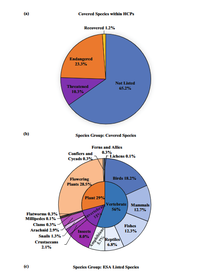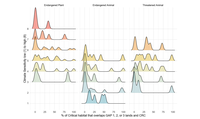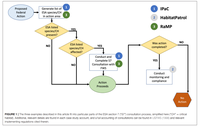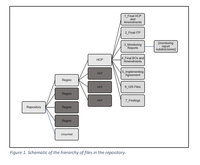
Habitat conservation plans under the endangered species act: A comprehensive three-decade analysis
Development can pose a substantial threat to imperiled species listed under the US Endangered Species Act (ESA), particularly as two-thirds of these species rely on private lands. Habitat Conservation Plans (HCPs) outlined in Section 10(a)(1)(B) of …
US Imperiled Species and the Five Drivers of Biodiversity Loss
We synthesized reported threats to US imperiled species to identify which of the five predominant drivers of biodiversity loss-climate change, invasive species, land and sea use change, pollution, and overexploitation-negatively influence species …
Designated critical habitats for U.S. imperiled species are not protected from climate and land-use change
Designation of critical habitat is an important conservation tool for species listed as threatened or endangered under the United States (U.S.) Endangered Species Act (ESA). While this is an important protective mechanism, lands designated as …The Endangered Species Act 101: Myths Busted
In the newest episode of our Endangered Species Act 101 series Megan Evansen, our Conservation Science & Policy Analyst, debunks three of the most common misconceptions surrounding the ESA.The Endangered Species Act is underfunded
Biodiversity is declining around the globe, with approximately one million species threatened with extinction in the coming decades! The U.S. Endangered Species Act is one of the strongest wildlife laws in the world and was created to combat this …Funding Needs for the US Fish and Wildlife Service's Endangered Species Programs
The FY 2024 update on the funding needs for the U.S. Fish and Wildlife Service (FWS) endangered species program, building on CCI’s funding analysis from 2019 , where we found that the FWS receives less than half of what is needed to run the ESA …Comments on FWS's Advance Notice of Proposed Rulemaking Concerning Compensatory Mitigation Mechanisms
Mitigation means steps taken to avoid, minimize, or offset the impacts of human activities on the biodiversity world. Strong mitigation helps conserve existing natural resources and recover degraded ones, and federal agencies have wide authority to …The Endangered Species Act 101: Section 7 v 10
In the newest episode of our Endangered Species Act 101 series Megan Evansen, our Conservation Science & Policy Analyst, breaks down the difference between Section 7 and 10 of the ESA.
Coproduce conservation technology with law and policy experts to increase its impact
Addressing the biodiversity crisis will mean developing and adopting new resources and methods that effectively improve public conservation efforts. Technologies have a long track record of increasing the efficiency of carrying out time-consuming …